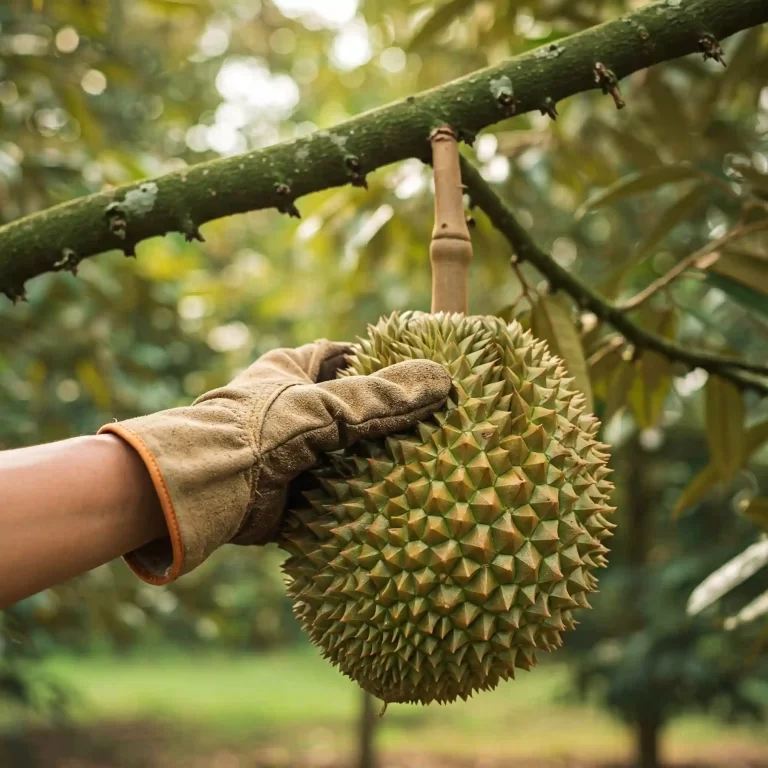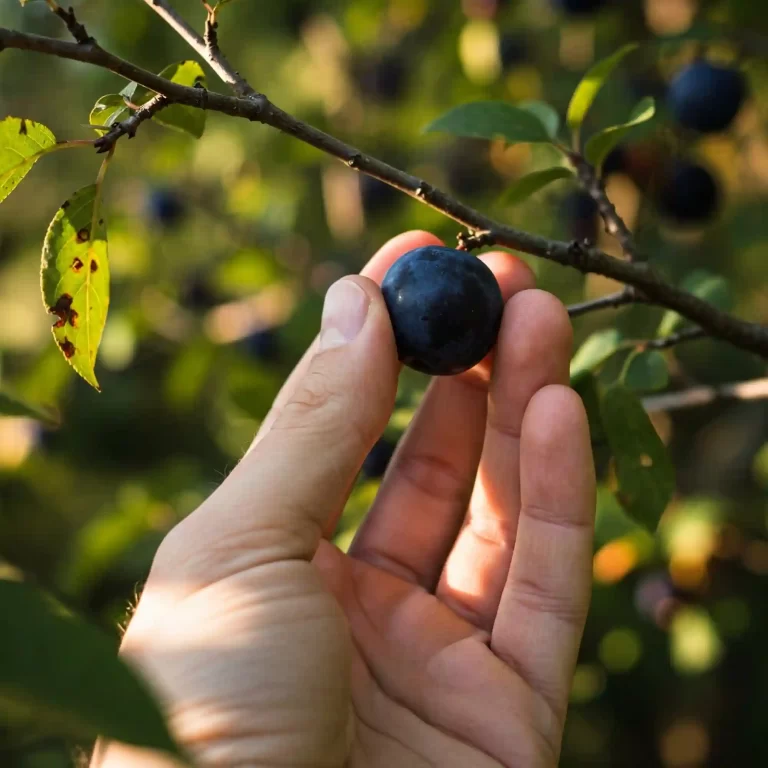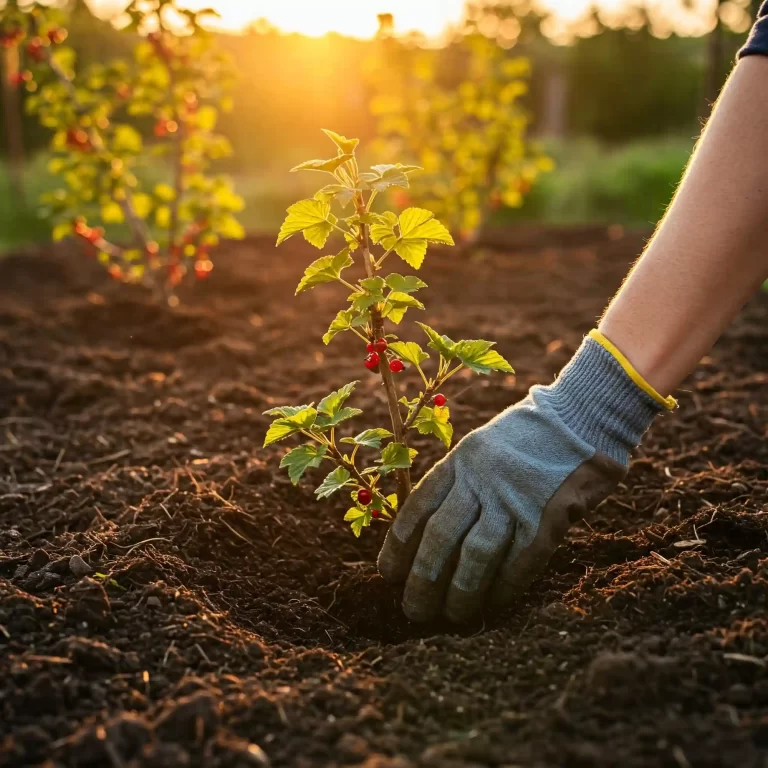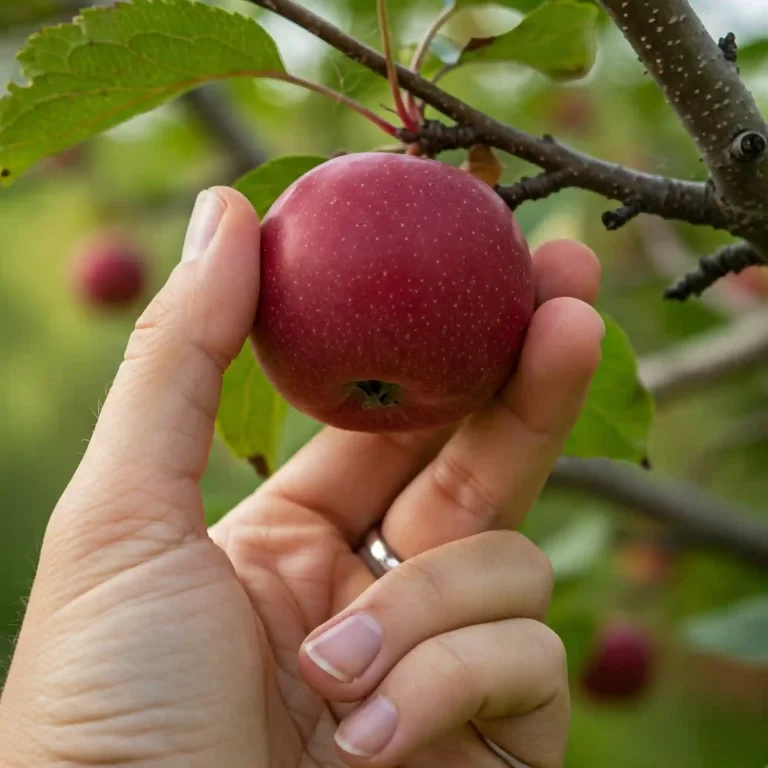Bitter melon is a tropical vine that produces edible fruits with a bitter taste. It is also known as bitter gourd, bitter apple, carilla fruit, and balsam. Bitter melon has many health benefits, such as lowering blood sugar, cholesterol, and inflammation. It is also used in various cuisines, especially in Asia and Africa.
However, growing bitter melon from seed can be challenging, as it requires warm and humid conditions, well-drained and fertile soil, and a trellis or a fence to support its vines. It also needs regular watering, fertilizing, and pruning to prevent diseases and encourage fruit production.
In this article, we will teach you how to grow bitter melon from seed in a simple and effective way. We will cover the following topics:
- How to prepare bitter melon seeds for planting
- How to choose the best soil, climate, and location for bitter melon plants
- How to water, fertilize, and prune bitter melon plants
- How to harvest and store bitter melon fruits
- How to deal with common bitter melon pests and diseases
By following these steps, you will be able to enjoy your own homegrown bitter melons in no time.
Key Takeaways
| Topic | Summary |
| How to prepare bitter melon seeds for planting | – Scarify, soak, or sow the seeds directly into the soil depending on the variety and the climate – Germinate the seeds faster using a heat mat, a plastic bag, or a paper towel |
| How to choose the best soil, climate, and location for bitter melon plants | – Provide warm and humid conditions with temperatures between 70 and 80 degrees F and plenty of sunlight – Create a microclimate using a greenhouse, a cloche, or a row cover in colder or drier regions – Use well-drained and fertile soil with a pH between 6.0 and 6.5 – Improve the soil quality by adding organic matter, compost, or manure – Support the vines with a trellis or a fence made of bamboo poles, wire mesh, or wooden stakes |
| How to water, fertilize, and prune bitter melon plants | – Water regularly, especially during flowering and fruiting stages – Check the soil moisture, use a drip irrigation system, or mulch the soil surface – Fertilize every two weeks during the growing season with organic fertilizers rich in nitrogen, phosphorus, and potassium – Apply bone meal, blood meal, or fish emulsion – Prune to improve air circulation, prevent diseases, and encourage fruit production – Remove dead or diseased leaves and branches, thin out excess flowers and fruits, and trim back long vines |
| How to harvest and store bitter melon fruits | – Harvest when the fruits are green and firm – Pick them gently by twisting or cutting them off the vine – Store them in a cool and dry place for up to a week – Save some seeds for future planting by scooping them out of the fruit and drying them on a paper towel |
| How to deal with common bitter melon pests and diseases | – Monitor for signs of aphids, spider mites, whiteflies, leaf miners, caterpillars, beetles, nematodes, powdery mildew, anthracnose, mosaic virus, bacterial wilt, etc. – Use organic methods such as hand-picking, spraying with water or soap solution, applying neem oil or diatomaceous earth, etc. – Avoid overwatering, overcrowding, or injuring the plants |
How to Prepare Bitter Melon Seeds for Planting
The first step in growing bitter melon from seed is to prepare the seeds for planting. Depending on the variety of bitter melon that you have chosen and the climate that you live in, you may need to scarify, soak, or sow the seeds directly into the soil.
Scarifying Bitter Melon Seeds
Scarifying means scratching or nicking the seed coat to help it absorb water and germinate faster. Some varieties of bitter melon have hard seed coats that need scarification before planting.
You can scarify bitter melon seeds using sandpaper, a knife, or boiling water.
To use sandpaper, rub the seeds gently on a piece of coarse sandpaper until you see a small dent or scratch on the seed coat.
To use a knife, carefully cut a small slit or notch on the seed coat with a sharp knife. Be careful not to damage the embryo inside the seed.
To use boiling water, pour some boiling water into a bowl and add the seeds. Let them soak for a few minutes until the water cools down. Then drain the water and rinse the seeds.
Soaking Bitter Melon Seeds
Soaking means submerging the seeds in water for a certain period of time to soften the seed coat and activate the germination process. Most varieties of bitter melon benefit from soaking before planting, especially in colder climates.
You can soak bitter melon seeds in water for 24 hours before planting.
To do this, fill a glass jar or a bowl with water and add the seeds. Cover the container with a lid or a cloth and place it in a warm and dark place. Change the water every 12 hours to prevent fungal growth. After 24 hours, drain the water and rinse the seeds.
Sowing Bitter Melon Seeds Directly into the Soil
Sowing means placing the seeds directly into the soil where they will grow. Some varieties of bitter melon can be sown directly into the soil without any scarification or soaking, especially in warmer climates.
You can sow bitter melon seeds directly into the soil after the last frost date in your area.
To do this, prepare a well-drained and fertile soil bed in a sunny location. Make small holes about half an inch deep and 18 inches apart. Drop one or two seeds into each hole and cover them lightly with soil. Water them well and keep them moist until they sprout.
Germinating Bitter Melon Seeds Faster
If you want to germinate bitter melon seeds faster, you can use some tricks such as using a heat mat, a plastic bag, or a paper towel.
To use a heat mat, place the seeds in a seed tray or a pot filled with moist potting mix. Cover them lightly with soil and place them on a heat mat set at 80 degrees F. Keep them moist and check them daily for sprouts.
To use a plastic bag, place the seeds in a ziplock bag with some moist paper towels or cotton balls. Seal the bag and place it in a warm and dark place. Check them daily for sprouts and moisture level.
To use a paper towel, place the seeds on a damp paper towel and fold it over. Place it in a plastic container with a lid and put it in a warm and dark place. Check them daily for sprouts and moisture level.
How to Choose the Best Soil, Climate, and Location for Bitter Melon Plants
The second step in growing bitter melon from seed is to choose the best soil, climate, and location for bitter melon plants. Bitter melon plants are tropical plants that need warm and humid conditions, well-drained and fertile soil, and plenty of sunlight to thrive.
Providing Warm and Humid Conditions
Bitter melon plants need warm and humid conditions to grow well. They prefer temperatures between 70 and 80 degrees F and relative humidity between 60 and 80 percent. They cannot tolerate frost or extreme heat.
If you live in a colder or drier region, you may need to create a microclimate for your bitter melon plants using a greenhouse, a cloche, or a row cover.
A greenhouse is a structure made of glass or plastic that traps heat and moisture inside. You can grow your bitter melon plants in pots or beds inside a greenhouse and control the temperature and humidity levels.
A cloche is a bell-shaped cover made of glass or plastic that protects individual plants from cold or wind. You can place a cloche over your bitter melon plants during the night or when the weather is unfavorable.
A row cover is a fabric or plastic sheet that covers an entire row of plants from end to end. You can use a row cover to protect your bitter melon plants from frost, insects, or animals.
Using Well-Drained and Fertile Soil
Bitter melon plants need well-drained and fertile soil to grow well. They prefer soil with a pH between 6.0 and 6.5 that is rich in organic matter and nutrients.
If your soil is too sandy, loamy, or clayey, you may need to improve its quality by adding organic matter, compost, or manure.
Organic matter is any material that comes from living organisms, such as leaves, grass clippings, straw, wood chips, etc. It improves the soil structure, water retention, drainage, and fertility.
Compost is organic matter that has been decomposed by microorganisms into humus, which is dark brown or black soil-like material. It adds nutrients, beneficial microbes, and organic matter to the soil.
Manure is animal waste that has been aged or composted to reduce its odor and pathogens. It adds nitrogen, phosphorus, potassium, and other nutrients to the soil.
To improve your soil quality, you can mix organic matter, compost, or manure into the top 6 to 12 inches of soil before planting. You can also apply them as mulch or side dressing during the growing season.
Supporting the Vines with a Trellis or a Fence
Bitter melon plants need a trellis or a fence to support their vines and tendrils. They are climbing plants that can grow up to 15 feet long and produce heavy fruits that can weigh up to 2 pounds.
If you do not provide a trellis or a fence for your bitter melon plants, they will sprawl on the ground and become prone to pests, diseases, and rotting.
You can build or choose a suitable trellis or fence for your bitter melon plants using bamboo poles, wire mesh, or wooden stakes.
To use bamboo poles, you can make a teepee or a pyramid shape by tying three or more poles together at the top and spreading them at the base. You can also make an arch or a tunnel by bending two poles into a curve and securing them on both ends.
To use wire mesh, you can make a cage or a panel by cutting a piece of wire mesh to the desired size and shape. You can also make a trellis by attaching wire mesh to a wooden frame.
To use wooden stakes, you can make a ladder or a grid by nailing or tying two or more stakes horizontally across two vertical stakes. You can also make an A-frame by leaning two ladders against each other at the top.
How to Water, Fertilize, and Prune Bitter Melon Plants
The third step in growing bitter melon from seed is to water, fertilize, and prune bitter melon plants. Bitter melon plants need regular watering, fertilizing, and pruning to prevent diseases and encourage fruit production.
Watering Bitter Melon Plants
Bitter melon plants need regular watering, especially during flowering and fruiting stages. They are thirsty plants that can wilt easily if they do not get enough water.
However, they do not like soggy soil that can cause root rot and fungal infections. They need well-drained soil that can retain moisture but not waterlogged.
To water bitter melon plants properly, you need to check the soil moisture, use a drip irrigation system, or mulch the soil surface.
To check the soil moisture, you can insert your finger into the soil up to the second knuckle. If the soil feels dry, you need to water your plants. If the soil feels moist, you can wait until it dries out slightly before watering again.
To use a drip irrigation system, you can install drip emitters or soaker hoses along the base of your plants. This way, you can deliver water directly to the roots without wetting the leaves or fruits. You can also adjust the water flow and frequency according to your plants’ needs.
To mulch the soil surface, you can spread a layer of organic material such as straw, grass clippings, wood chips, or leaves around your plants. This will help conserve moisture, suppress weeds, moderate soil temperature, and add nutrients to the soil.
Fertilizing Bitter Melon Plants
Bitter melon plants need organic fertilizers rich in nitrogen, phosphorus, and potassium to grow well. They are hungry plants that can deplete the soil nutrients quickly if they are not replenished.
However, they do not like synthetic fertilizers that can burn their roots and cause salt buildup in the soil. They need organic fertilizers that are gentle and slow-release.
To fertilize bitter melon plants properly, you need to apply bone meal, blood meal, or fish emulsion every two weeks during the growing season.
Bone meal is an organic fertilizer made from ground animal bones. It is high in phosphorus and calcium, which are essential for root development and fruit formation.
Blood meal is an organic fertilizer made from dried animal blood. It is high in nitrogen, which is essential for leaf growth and green color.
Fish emulsion is an organic fertilizer made from liquid fish waste. It is high in nitrogen, phosphorus, and potassium, which are essential for overall plant health and productivity.
To apply these fertilizers, you can sprinkle them around the base of your plants and water them well. You can also dilute them with water and spray them on the leaves as a foliar feed.
Pruning Bitter Melon Plants
Bitter melon plants need pruning to improve air circulation, prevent diseases, and encourage fruit production. They are vigorous plants that can grow too dense and tangled if they are not trimmed.
However, they do not like excessive pruning that can stress them and reduce their yield. They need moderate pruning that can remove the unwanted parts and shape the plants.
To prune bitter melon plants properly, you need to remove dead or diseased leaves and branches, thin out excess flowers and fruits, and trim back long vines.
To remove dead or diseased leaves and branches, you can use a pair of sharp scissors or pruners to cut them off at the base. This will help prevent the spread of pests and diseases and improve the appearance of your plants.
To thin out excess flowers and fruits, you can use your fingers or a pair of scissors to pinch off some of the flowers and fruits that are too small, misshapen, or damaged. This will help redirect the energy and nutrients to the remaining flowers and fruits and increase their size and quality.
To trim back long vines, you can use a pair of scissors or pruners to cut off some of the vines that are too long, unruly, or crossing each other. This will help create more space and light for your plants and prevent them from overgrowing.
How to Harvest and Store Bitter Melon Fruits
The fourth step in growing bitter melon from seed is to harvest and store bitter melon fruits. Bitter melon fruits are ready to harvest when they are green and firm, usually 12 to 16 weeks after planting.
However, they do not ripen well after picking, so you need to harvest them at the right time and store them properly.
Harvesting Bitter Melon Fruits
Bitter melon fruits are best harvested when they are green and firm, before they turn yellow or orange and become too bitter. They usually have a length of 6 to 12 inches and a diameter of 2 to 3 inches.
To harvest bitter melon fruits, you need to pick them gently by twisting or cutting them off the vine. You need to wear gloves or use a cloth to protect your hands from the prickly skin and the sap of the fruits.
You also need to harvest them frequently, at least once or twice a week, to encourage more fruit production. You can expect to harvest about 10 to 15 fruits per plant per season.
Storing Bitter Melon Fruits
Bitter melon fruits are best stored in a cool and dry place for up to a week. You can wrap them individually in paper towels or newspaper and place them in a plastic bag or a container with holes. You can also store them in the refrigerator crisper drawer for a longer shelf life.
You can also save some seeds for future planting by scooping them out of the fruit and drying them on a paper towel. You can store the seeds in an envelope or a jar in a cool and dark place for up to a year.
How to Deal with Common Bitter Melon Pests and Diseases
The fifth step in growing bitter melon from seed is to deal with common bitter melon pests and diseases. Bitter melon plants are susceptible to various pests and diseases that can affect their growth and yield.
However, they can be prevented or controlled by using organic methods such as hand-picking, spraying with water or soap solution, applying neem oil or diatomaceous earth, etc.
Monitoring for Signs of Pests and Diseases
Bitter melon plants can be attacked by various pests such as aphids, spider mites, whiteflies, leaf miners, caterpillars, beetles, nematodes, etc.
These pests can suck the sap, chew the leaves, bore the stems, or feed on the roots of your plants. They can also transmit viruses, bacteria, or fungi that can cause diseases.
Some of the common diseases that affect bitter melon plants are powdery mildew, anthracnose, mosaic virus, bacterial wilt, etc.
These diseases can cause white patches, brown spots, yellow mottling, wilting, or rotting of your plants. They can also reduce the quality and quantity of your fruits.
To monitor for signs of pests and diseases, you need to inspect your plants regularly for any abnormal symptoms such as discoloration, distortion, holes, spots, webs, droppings, etc. You also need to look under the leaves, on the stems, on the fruits, and on the soil for any signs of pests or diseases.
Using Organic Methods to Control Pests and Diseases
Bitter melon plants can be protected from pests and diseases by using organic methods that are safe for humans, animals, and the environment. Some of these methods are:
- Hand-picking: You can manually remove any pests or infected parts from your plants using your fingers or a pair of tweezers. You can also use a vacuum cleaner or a sticky trap to catch any flying pests.
- Spraying with water or soap solution: You can spray your plants with water or a mild soap solution to dislodge or kill any pests that are on the leaves or stems. You can also add some garlic, onion, or pepper to the solution to repel some pests.
- Applying neem oil or diatomaceous earth: You can apply neem oil or diatomaceous earth to your plants to deter or kill any pests that are on the leaves, stems, or fruits. Neem oil is a natural insecticide that comes from the seeds of the neem tree. Diatomaceous earth is a natural pesticide that comes from the fossilized remains of microscopic algae.
- Avoiding overwatering, overcrowding, or injuring the plants: You can prevent some diseases by avoiding overwatering, overcrowding, or injuring your plants. Overwatering can cause root rot and fungal infections. Overcrowding can reduce air circulation and increase humidity. Injuring can create wounds that can invite pathogens.
- Rotating crops or using resistant varieties: You can prevent some diseases by rotating crops or using resistant varieties. Rotating crops means changing the location of your plants every year to avoid soil-borne diseases. Using resistant varieties means choosing plants that have been bred to resist certain diseases.
Conclusion
Bitter melon is a tropical vine that produces edible fruits with a bitter taste and many health benefits. Growing bitter melon from seed can be challenging, but rewarding if you follow these steps:
- Prepare bitter melon seeds for planting by scarifying, soaking, or sowing them directly into the soil.
- Choose the best soil, climate, and location for bitter melon plants by providing warm and humid conditions, well-drained and fertile soil, and a trellis or a fence to support the vines.
- Water, fertilize, and prune bitter melon plants by watering regularly, fertilizing every two weeks with organic fertilizers, and pruning to improve air circulation, prevent diseases, and encourage fruit production.
- Harvest and store bitter melon fruits by harvesting when they are green and firm, picking them gently by twisting or cutting them off the vine, and storing them in a cool and dry place for up to a week.
- Deal with common bitter melon pests and diseases by monitoring for signs of aphids, spider mites, whiteflies, leaf miners, caterpillars, beetles, nematodes, powdery mildew, anthracnose, mosaic virus, bacterial wilt, etc., and using organic methods such as hand-picking, spraying with water or soap solution, applying neem oil or diatomaceous earth, etc.
By following these steps, you will be able to enjoy your own homegrown bitter melons in no time. We hope this article has helped you learn how to grow bitter melon from seed in a simple and effective way. Happy gardening!



